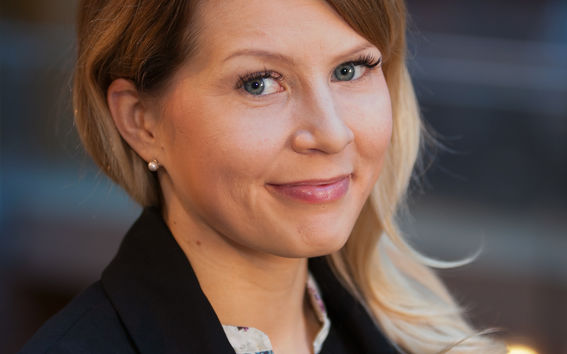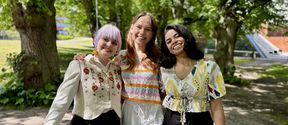The starting point in Flipped classroom is the student’s personal learning process

Taija Turunen, Assistant Professor of Design Business Management at the School of Business, takes advantage of the Flipped classroom teaching philosophy in her teaching. The philosophy brings the students to the centre of teaching and the teacher is ‘left’ with the role of a facilitator. In traditional teaching methods, the teacher is a disseminator of information, whereas now the teacher gives students ‘a map and a compass’ for guidance as they move actively towards the learning goals – but everyone will still have to reach the goals themselves.
‘In the Flipped classroom teaching philosophy, students work on material given to them in advance and the teacher's work also takes place mainly outside the classroom. When they meet, they reflect on things and discuss them. The Flipped classroom is demanding for both the students and the teachers, but as the starting point is specifically the student’s personal learning process, it is also a very meaningful way to learn. Digitalisation makes Flipped classroom possible and the teacher’s email does not get full the way it did before, either’, says Taija Turunen.
Learning must be fun
Taija Turunen tells that she has started her pedagogical studies fairly early because she has always been interested in learning, the cognitive process taking place inside our heads.
‘I think learning should be fun. I usually think about what is fun in my opinion and the others often seem to feel the same way about it. The time passes faster when students can to some extent manage their learning themselves and have a say on how and what they learn.’
‘I use gamification in teaching a lot, which makes students easily learn without even realising they do it, as if by accident. I think you should also practice the things you are learning. We have even played business model bingo and I have to admit I was a bit surprised myself at how well bingo helped to achieve the learning goals.’
Interaction and reflection important
When Taija Turunen started teaching at the School of Business a couple of years ago, she was asked to plan and implement a bachelor's level design management course. She was talking about it in passing with a colleague, Assistant Professor Oscar Person from the Aalto University School of Arts, Design and Architecture and heard that he had also been asked to organise a similar kind of course. They therefore suggested to the managements of their schools that they could organise a Design and Creativity in Business course together, and the idea was supported.
‘My colleague and I have a constant dialogue and reflect on what works and what doesn’t. It has been extremely inspiring when my colleague’s views have sometimes been very different from mine. We have then both justified our views and the outcome has definitely been better than if we had both given a course alone, based just on our own backgrounds.’

Taija Turunen finds that digitalisation should definitely not be an aim it itself in teaching, but enhance and enable things that used to be very laborious.
‘In my teaching, it is not digitalisation but interaction and reflection that are at the centre of learning. And the aim to create fun and excitement in the classroom, of course.’
Read more news

Online AI course could boost study equality
Students at the School of Business believe that mastering Artificial Intelligence (AI) can be beneficial for both academic success and career prospects, as AI becomes increasingly integrated into daily life.
2 027 new students admitted to Aalto University’s Finnish, Swedish bachelor’s programmes
13 500 applied to Aalto University in Finland's spring joint application in 2024
Meet the the Program Assistants that elevate the Aalto University Summer School experience for 250 students from all over the world
Each year, the Aalto University Summer School has grown its operations and course curriculum tremendously.